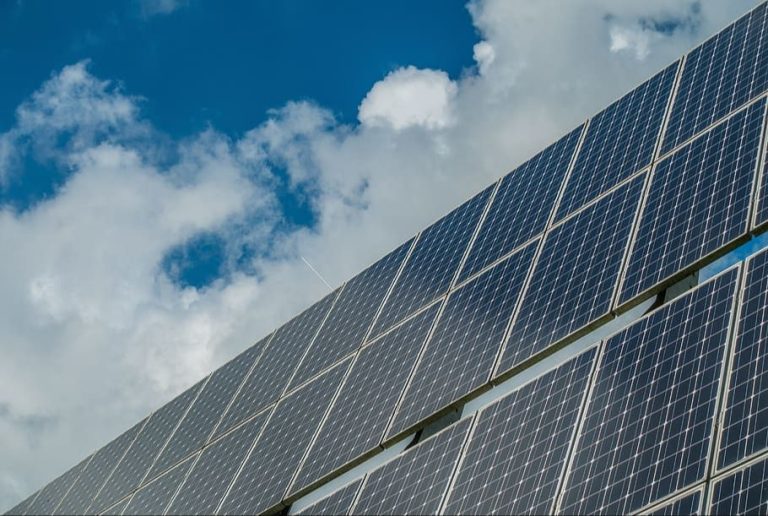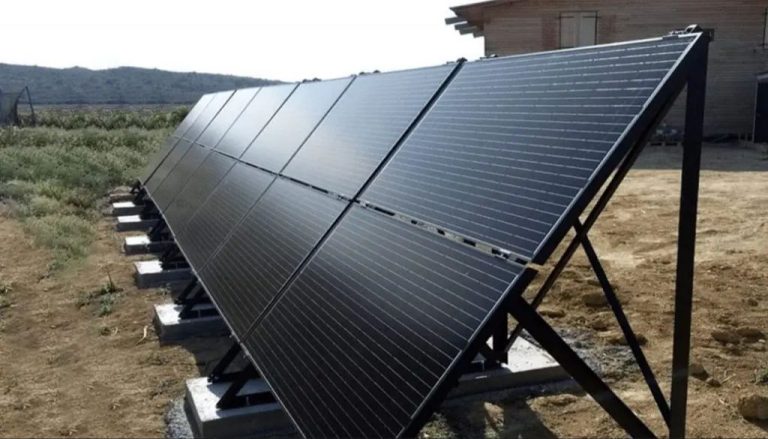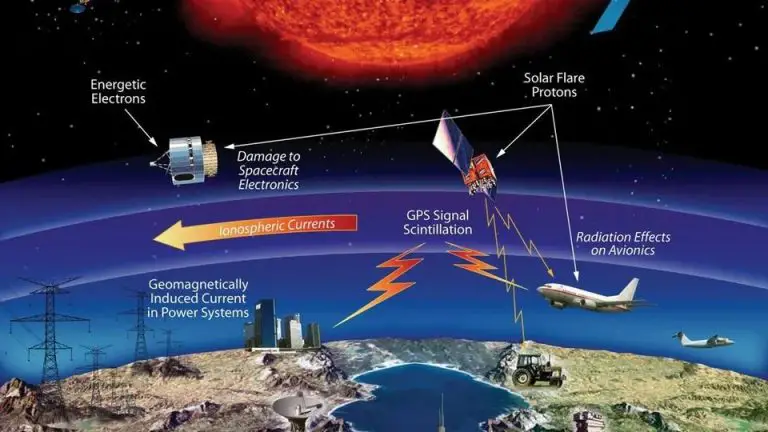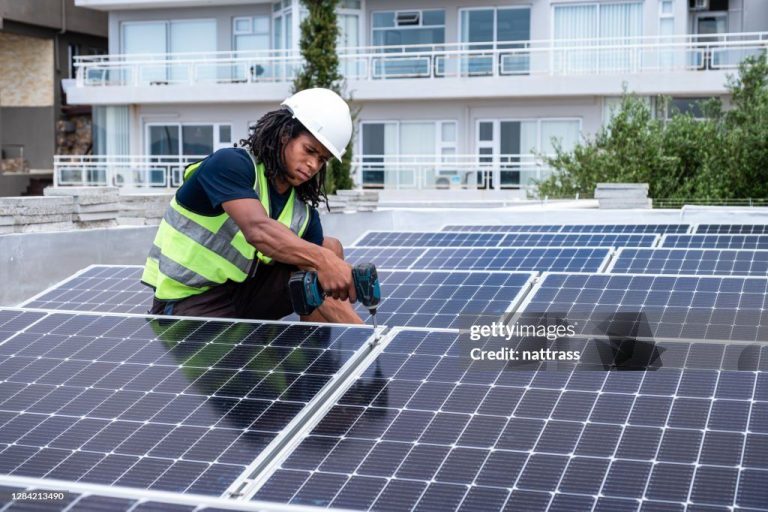Can Solar Panels Cool The Planet?
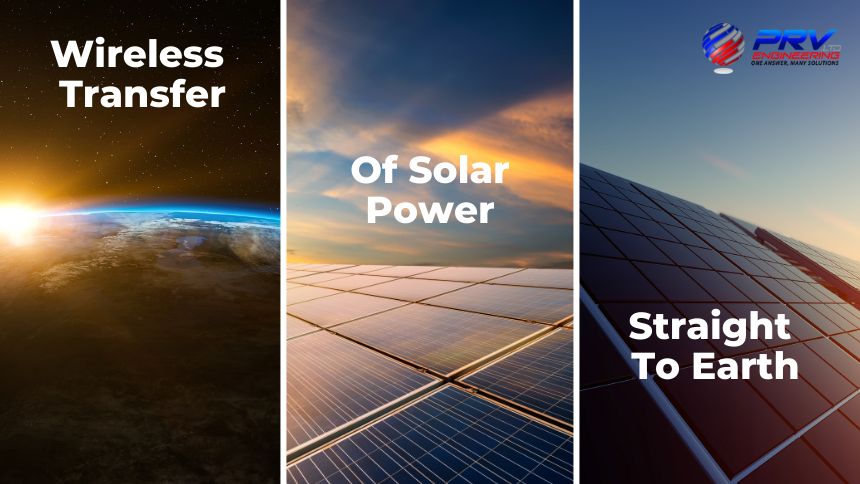
Climate change is one of the most pressing issues facing the world today. Greenhouse gas emissions, primarily from burning fossil fuels, are causing global temperatures to rise at an alarming rate. This is leading to sea level rise, extreme weather, and disruption of ecosystems around the world.
Solar panels have emerged as a popular source of renewable energy that does not contribute to climate change. The solar industry has experienced massive growth in recent years, with solar capacity increasing over 200-fold since 2000. Many view solar power as a critical part of mitigating climate change and transitioning the world to a low-carbon energy system.
But can solar panels actually cool the planet? In this article, we’ll examine the climate impacts of solar photovoltaics and analyze its potential role in climate change mitigation.
How Solar Panels Work
Solar panels convert sunlight into electricity using the photovoltaic effect. When sunlight hits the solar cells in a panel, it knocks electrons loose from the atoms in the cell’s semiconducting material. The freed electrons then flow through the panel as electricity.
According to the U.S. Department of Energy, “Solar technologies convert sunlight into electrical energy either through photovoltaic (PV) panels or through mirrors that concentrate solar radiation.” [1] PV cells are made of materials like silicon that release electrons when exposed to sunlight. The electrons are captured by conductive plates on the cell and flow out as DC current when wires are attached.
The National Grid explains that “Photovoltaic cells convert light into an electric current using the photovoltaic effect.” [2] When sunlight strikes the semiconductor material in PV cells, the energy knocks electrons loose, allowing them to flow freely.
Solar Panel Efficiency
The efficiency of a solar panel indicates how much of the sun’s energy striking the panel is converted into usable electricity. This conversion efficiency is a key technical parameter for solar panels.
Most mass-produced solar panels on the market today have an efficiency of 15-20%. According to the U.S. Department of Energy, the average efficiency of solar panels falls between 15-18% for residential panels and 19-22% for commercial panels. Top lab cell efficiencies can reach over 22%, but these cutting-edge designs are not widely commercially available.
There are ongoing efforts by researchers to continue pushing solar cell efficiency higher through advanced materials and device architectures. However, there are practical limits to solar efficiency based on thermodynamics. The theoretical maximum efficiency limit for single-junction crystalline silicon solar cells under standard test conditions is approximately 29%.
While higher efficiency is desirable, solar panels with typical 15-20% efficiency can still produce significant clean energy with proper system design and installation. The key factors are optimizing panel orientation, using high-quality components, and maximizing sun exposure.
Reducing Fossil Fuel Reliance
Solar energy allows us to generate electricity without burning fossil fuels like coal and natural gas. As adoption of solar power increases, it directly displaces electricity that would otherwise be generated at conventional power plants.
For example, in areas with abundant sunlight, utility-scale solar farms can provide renewable electricity to the grid on par with fossil fuel plants. This reduces the operating hours of coal and natural gas plants, lowering their fuel usage and emissions (1). Residential and commercial solar has a similar impact – by generating your own electricity from the sun, you rely less on centrally-generated power from the utility.
Studies show that solar photovoltaic generation avoids significant amounts of fossil fuel combustion and associated pollution. One analysis found that solar PV avoided over 26 million tons of carbon dioxide emissions in 2014 alone (2). As solar continues to expand as part of the global energy mix, it serves as a renewable and clean alternative to coal and gas-fired generation.
Sources:
(1) https://energy5.com/the-rise-of-solar-energy-reducing-reliance-on-fossil-fuels/
Lowering Carbon Emissions
Solar power produces little to no carbon emissions unlike electricity generated from fossil fuels like coal and natural gas which emit high levels of greenhouse gases. Solar photovoltaic (PV) panels convert sunlight directly into electricity without any combustion process, and thus have no operational emissions. According to the United Nations Chronicle, “Solar power produces no emissions during generation itself, and life-cycle assessments clearly demonstrate that it has a smaller carbon footprint from “cradle-to-grave” than fossil fuels.”
Studies show solar can significantly reduce carbon emissions compared to fossil fuels. Research from Columbia University found that an acre of solar panels prevents over 200 times more CO2 emissions annually than an acre of trees. Widespread adoption of solar energy and phase-out of fossil fuels is critical for reducing greenhouse gas emissions and mitigating climate change.
Challenges and Limitations
While solar power offers many benefits, it also comes with some challenges and limitations that need to be considered. One of the main issues with solar energy is intermittency – solar panels only produce energy when the sun is shining. This can cause problems matching energy supply with demand, especially when solar makes up a significant portion of the energy mix. Places that rely heavily on solar need ways to store excess energy produced during sunny times for use at night or during cloudy periods. However, storage solutions like batteries can add a lot to the overall cost of a solar system (https://www.constellation.com/energy-101/energy-innovation/solar-energy-pros-cons.html).
The intermittent nature of solar can also impact grid stability. Sudden drops in solar output as clouds pass by can cause fluctuations in frequency and voltage on the grid. This becomes more of an issue as solar penetration increases. Grid operators have to manage these variations through forecasting solar output and having backup sources that can quickly ramp up if needed (https://www.forbes.com/home-improvement/solar/solar-energy-pros-and-cons/).
While solar panels themselves produce clean energy during operation, there are some environmental impacts from manufacturing and disposal that need to be managed. The panels require rare earth metals and other materials that have to be mined and processed. At end of life, proper recycling is important to prevent waste and recover valuable materials.
Other Environmental Impacts
While solar panels provide clean renewable energy, their manufacturing process does have some negative environmental impacts. According to a recent report by EcoWatch, the production of solar panels requires significant amounts of energy and water, and also produces some air and water pollution from chemical use and waste disposal (Source).
Solar panel manufacturing involves many toxic chemicals and materials like hydrochloric acid, sulfuric acid, nitric acid, hydrogen fluoride, 1,1,1-trichloroethane and acetone. Proper disposal of these is important to avoid releasing toxins into the environment. The manufacturing processes also consume a significant amount of water for cleaning and cooling. Releasing wastewater without proper treatment can harm bodies of water (Source).
In terms of land use, utility-scale solar farms can take up a lot of land space, comparable to fossil fuel power plants. While rooftop solar takes up no additional land, ground-mounted systems do occupy land that could otherwise be left natural or serve other purposes. There are concerns regarding solar development on agricultural land or ecologically sensitive areas (Source).
Finally, while most components of solar panels are recyclable, the recycling process itself takes energy and labor. Proper end-of-life recycling is important for minimizing waste. Some types of solar panels contain small amounts of heavy metals like lead and cadmium that require careful handling and processing (Source).
Global Adoption Rates
Solar power capacity has increased dramatically around the world over the past decade. According to the International Energy Agency (IEA), global solar PV manufacturing capacity reached 450 gigawatts (GW) for polysilicon and up to 640 GW for modules in 2022, with China leading manufacturing capacity. The IEA reports that total global solar PV capacity increased 22% to over 1,130 GW by the end of 2022.
Data from Our World in Data shows that global installed solar energy capacity grew from under 10 GW in 2008 to over 1,000 GW by the end of 2021. The countries with the most installed solar capacity in 2021 were China, United States, Japan, India and Germany. China accounted for over one-third of total global solar capacity in 2021.
As of 2022, Wikipedia reports there are more than 40 countries around the world with over 1 GW of cumulative solar PV capacity. Other than the countries mentioned above, this list includes Canada, South Africa, Chile, Australia, Spain, Italy, South Korea, France and others. The growth of solar globally has been significant, with total capacity increasing over 100 times in the past decade.
Role in Climate Change Mitigation
Solar energy has enormous potential to reduce greenhouse gas emissions and mitigate climate change globally. According to the Solar Energy Industries Association (SEIA), solar power in the United States avoided over 50 million metric tons of CO2 emissions in 2021 alone (1). Widespread adoption of solar could significantly reduce reliance on fossil fuels like coal, oil and natural gas that produce large quantities of planet-warming emissions.
The Department of Energy notes that generating electricity from photovoltaic solar panels produces no greenhouse gases during operation (2). In contrast, burning fossil fuels for electricity accounted for over 25% of total U.S. greenhouse gas emissions in 2020. Solar panels installed on homes, businesses or utilities could displace electricity that would otherwise be generated from carbon-intensive sources.
Various projections indicate solar alone could provide 20-50% of global electricity needs by 2050 (3). Realizing this potential would avoid billions of tons of annual CO2 emissions from fossil fuel plants. While not a silver bullet solution, rapidly scaling solar power globally is critical for reducing emissions and limiting the impacts of climate change.
1. https://www.seia.org/initiatives/climate-change
2. https://www.energy.gov/eere/solar/solar-energy-wildlife-and-environment
3. https://blog.ecoflow.com/us/can-solar-energy-stop-climate-change/
Conclusion
While solar panels can generate clean electricity and reduce reliance on fossil fuels, they alone cannot solve climate change. Widespread adoption of solar power requires supporting policies and changes in energy infrastructure. Solar energy currently provides only a small fraction of global electricity generation. To play a greater role, solar must become more affordable and accessible. Governments can accelerate this transition through incentives for renewable energy production and use. However, solar development must also consider land use impacts and integrate with the existing grid. Ultimately, addressing climate change requires a portfolio of solutions, from transitioning to renewable sources like solar to improving efficiency and reducing overall energy demand. Though promising, solar panels represent just one piece of the puzzle in mitigating greenhouse gas emissions and cooling the planet.



